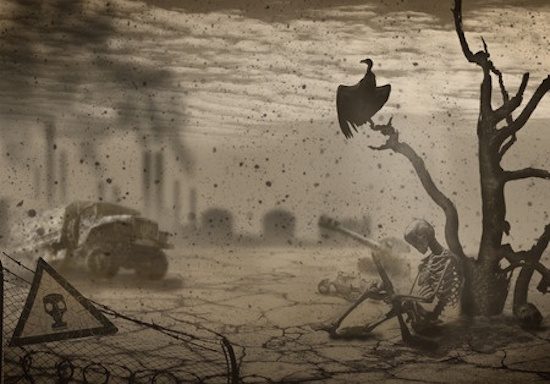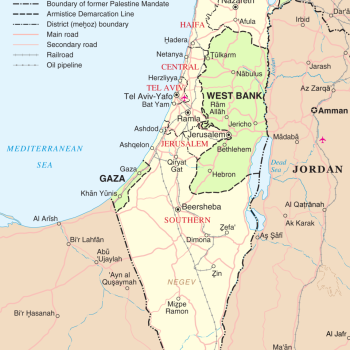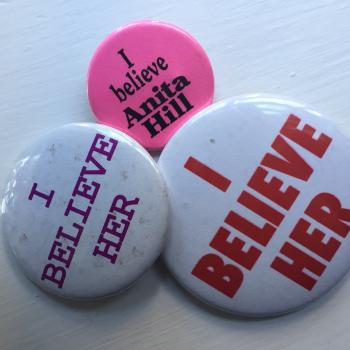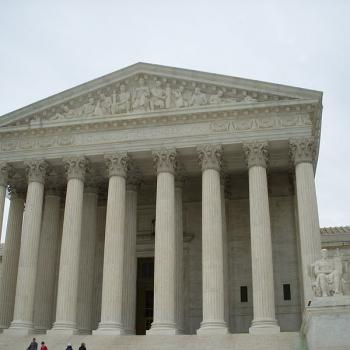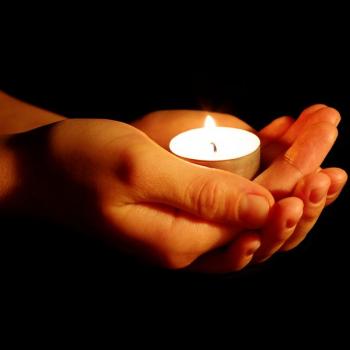While delegates in Paris have been hammering out a long-overdue global deal to lower greenhouse gas emissions in an effort to address climate change, US college students continue to prophesy plague, nuclear war, water wars, hurricanes, tsunamis, rising sea levels, ebola and other pandemics as a necessary apocalyptic intervention that will be required before we are able to move into a sustainable future as a human community.
These visions are the result of one of my favorite assignments in my Environmental Ethics course. I tell my students that they are historians one-hundred years in the future and they have come together to write a textbook that documents how the world moved from the climate crisis and overpopulated world of 2015 to a sustainable living community in 2115. Because the assignment neither defines what a “sustainable living community” looks like in 2115 nor explains how the world moved from there to here – the students must use their imaginations in order to think creatively and constructively about both of these questions.
Their visions of the future are quite lovely and they usually reflect all the things that we already know we need to do as human community in order to create sustainable societies. People use renewable energy rather than fossil fuels. The population has been vastly reduced to sustainable levels. Birth control is widely accessible and families are small. People largely eat vegetarian diets supplemented by occasional meat at ceremonial or celebratory occasions. Small scale production of most agriculture and goods has shaped vibrant bio-regions that are self-contained and sustainable. Global trade still occurs but it is vastly reduced and narrowed to things that can only truly be grown or made in particular regions or climates. People eat local food and they eat with the seasons. Mass transit is widespread and efficient and few people need or own cars. Because travel costs reflect their environmental impact, travel is greatly reduced.
However, while they are able to imagine beautiful utopian societies in the future, they have no capacity for imagining how to get there from here.
Throughout the semester these students simultaneously agree that human behavior must change – and most particularly US American behavior – and that they do not think it can change voluntarily. Consequently, the only way they see to get from here to there is through hell.
The heaven that they imagine is only possible after the apocalypse.
What other way is there for us to get from a world of 7+ billion people down to a smaller, more healthy and sustainable global population? For the young people that I teach, the dystopian futures of global pandemics, nuclear war, terrorism, and ecological destruction are the necessary evils that will transition humankind and the planet into a more sustainable utopia.
Terrifying as it is, its also not particularly surprising. I chalk this up to two dominant trends that shape the way that they think about sustainability and achieving a sustainable future.
First, the rise of young adult dystopian literature over the past several decades is both shaping and reflecting the pessimism, cynicism, and despair that many young people (and others!) feel as we look at the world around us and try to imagine a different future. Its all too easy to get lost in the present and to lose the capacity to imagine a way forward toward an alternative future.
Don’t get me wrong, I love dystopian literature and I’ve read a lot of it. While it certainly isn’t a new genre, its popularity at this point is history is telling. I think many young people are both frightened by the prospects for our environmental future and equally dismayed about having to change their behavior in order to live into a sustainable future. This relates to the second trend that I see shaping cultural expectations and imaginations.
Second, the hyper excesses of late capitalist society reflect a culture disordered by our own desires. While there is certainly a serious problem of inequality in US society and many college students are struggling under mountains of debt, many others are the product of a comfortable middle and upper-middle class society that has transformed shopping and consumption from essentials for survival to an art of entertainment, distraction, and amusement. While this consumption still manifests itself in objects (clothing, electronics, shoes, cars, etc.) it has expanded over the last twenty years to include the consumption of services as well. There has been an explosion of restaurants and craft breweries as a new “foodie” culture has developed and expanded into middle America. The hospitality industry has also emerged as increasing numbers of people with “disposable” income seek comfort, excitement, and entertainment through travel, spa treatments, and personal trainers and life coaches.
While our economy is dynamic and has transformed over the past twenty years (particularly since NAFTA) from an industrial production economy to an information and service economy, there are many working-class people who have left behind in the transition. While those in the IT sector largely have decent paying jobs with benefits, those in the service economy do not.
The college students that I teach have only known this new world of radical inequality and rampant overconsumption. Their essays throughout the semester reflect their own personal struggles with recognizing that their consumption and behavior is damaging the environment and that most of them are not willing to change that behavior because it is deemed “too hard” or “inconvenient.”
My students reflect on the reality of their own impatience and how a world of instant gratification has made them less willing to wait, for anything. They have not learned how to take the long-view. This makes teaching about the importance of worldview change particularly difficult because worldview change takes an awful long time. And worldview change is absolutely necessary if we are to live into an alternate sustainable future that doesn’t require an apocalypse.
I do not think an apocalypse is required but there is much that needs to be transformed if we are to move the environmental footprint of the average US citizen from 5.3 planets back down to 1.
First, we must recognize that our present worldview is disordered and seek alternative worldviews that respect the sacred aspects of our natural world.
Second, we must realize that transforming our lives in ways that move us toward sustainability can lead us to more fulfilling lives because fulfillment is not found in the material goods that have come to dominate our lives but it is found in the quality of our relationships and in a life well-lived.
Third, we must acknowledge that the changes that are necessary to move us toward sustainability are systemic changes in our modes of transportation, the efficiency (and size) of our homes, and in the environmental impact of our diet. These are issues that individuals will not be able to address on our own.
System-wide rethinking of the design of our communities; of the kind, quality, and compensation of work in our culture; of the growth and consumption of food in our diets will need to reflect our cultural recognition of our desire for a better world, a healthy world where no one is hungry or homeless.
In the midst of one of most grim Advents I can recall – an exercise in imagination, utopia, and hope is a welcome event. The ritual of waiting for the coming of the Christ child is a ritual of anticipation and expectation. Christ showed us the pathway for justice and peace. It does not lie in wealth or power or politics. In fact, it shuns these manifestations of human authority in favor of compassion, solidarity, and humility.
It is time for us to do the same.

